
Airports are hubs in which diverse languages and cultures exist in the same place at the same time.
Upon exploring this opportunity, I developed LINGUA, a cafe and service platform for airport
travelers to connect through language.
Lingua: a thesis
Time Frame: September 2015 - May 2016 | Featured on: Syracuse University Industrial and Interaction Design Thesis Show, 2016
How might design encourage and facilitate language and cultural exchange through meaningful cross-cultural encounters in a transient space?
exploring an opportunity
After spending a summer in Lebanon studying Arabic, I began to ponder upon how language influences the way people connect and interact with one another. As I explored this idea, I realized that airports pose a potential design opportunity. The nature of airports lends itself to foster and converge individuals of all cultures, languages, and beliefs, amongst other. In order to begin unpacking this question and exploring potential opportunities, I first had to understand the space and the people inhabiting the space, but also the way in which language, communication, and culture relate to one another.

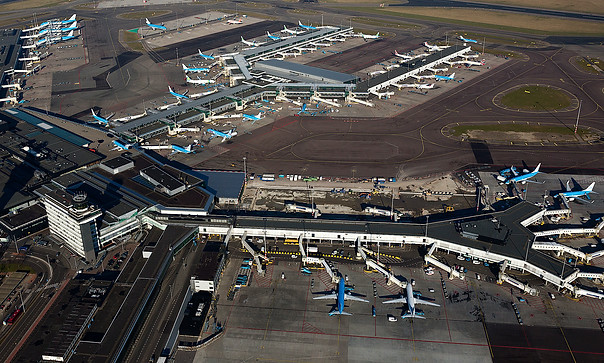
Airport as City
Airport environments are constantly changing as a result of time and dynamic audiences. Airports are “a vital component of contemporary urbanism”, and are transient and temporary spaces. They have long served educational purposes for the general public, and, more recently, have integrated spaces that promote a sense of engagement and interaction, including prayer rooms, gardens, and children play areas. Like any urban space, airports share relationships within the social, functional, and time dimensions.
Transient spaces
Airports are transient spaces. In other words, spaces through which people pass by, but create no permanent relationship with. In some cases, people use visual cues to orient themselves within transient spaces. Some are purposefully designed, such as those created by the community for the community. Other cues may be recognized cues that people create for themselves, such as familiar strangers, individuals whom people come across repeatedly, but do not interact with and would otherwise consider strangers.

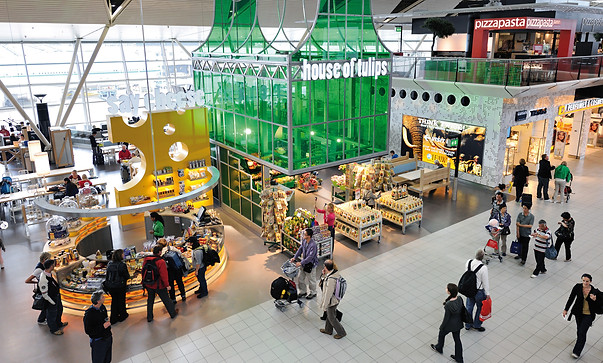
temporary spaces
Temporary spaces can be spaces that exist for a short period of time and, often times, they “pop up”. They evoke a specific kind of emotion and attract all kinds of different groups of people. Airports, however, are temporary in the sense that, similar to being transient spaces, they are spaces which individuals only inhabit for a set amount of time.
Public & Private spaces
A public space “is a place accessible to anyone” in which there is an interconnection between the space and social interactions. Public spaces are spaces for cultural formation and are experienced differently by everyone. As social spaces have become privatized, many have become part of the ‘semi-public realm’. Although airports can be considered to be public spaces, they also consist of private spaces and businesses, so it is arguable that airport spaces are neither public nor private, but rather a mix of both.
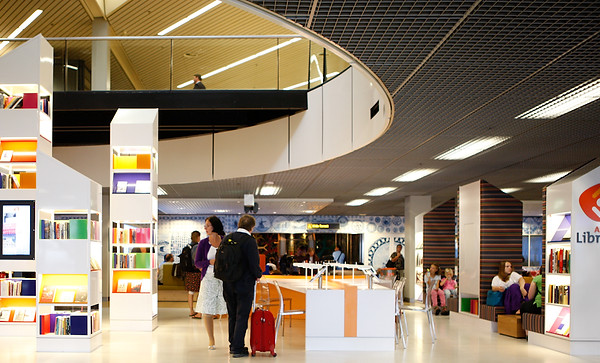



gathering spaces
in airports
A new kind of social spaces have recently become part of airports. Examples of such places include O’Hare Urban Garden, Kids on the Fly, Schiphol Airport Library, and yoga studios. The first of its kind, O’hare Urban Garden is an aeroponic garden that produces edible foods that are supplied to the airport’s Farmers’ Market and restaurants. Meanwhile, Kids on the Fly simulates airport features and technical procedures so that children can learn more about the space they are in.




understanding
travelers
I surveyed and interviewed people about their traveling experiences in order to get in the mindset of travelers and identify travelers’ needs and preferences. I also created a travel journal for passengers to fill out during their travels. In doing this, I was able to recognize their behaviors, motivations, and traveling objectives, but mainly I learned that their experiences vary per circumstance. The following personas are based on the people I met and the data I gathered.
factors to consider

Space

transiency

mobility/ speed

connectivity/technology

time

global community

familiarity/
unfamiliarity

communication

reasons for travel

behaviors

accessibility
“In entering the public one always risks encountering those who are different, those who identify with different groups and have different opinions of different forms of life.”
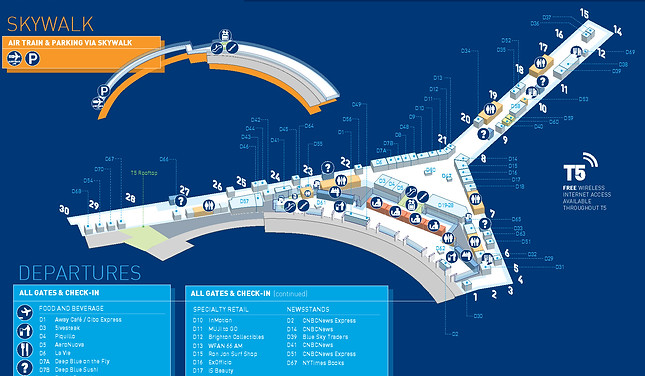
1
2
3
Check-in
TSA
terminal*
GAte
boarding
AIRplane
Visiting T5 at JFK
I traveled to JFK Terminal 5 on two occasions in order to expand my research spectrum, observe human behavior in the intended space, and test my assumptions. It had only been a week since the ISIS attack in Paris, and security at both airports (SYR and JFK) seemed more scrutinous than usual. As I realized this, I became even more aware of what my tasks were. Some of the questions I had were as follows: (1) What are people doing?, (2) How are people interacting?, (3) How are people moving through space?, and (4) Where are people gathering? During my time at JFK T5, I realized that a pivotal factor in travelers’ journeys is the waiting period upon going through TSA and right before boarding. Additionally, I found out some of the spaces within the airport may be unheard of to travelers as a result of their location.
* time spent at the terminal varies per circumstance, with the main factors being time and personal interests



1
2
3
flight information monitor
Interactive
Memory game
T5 rooftop
What: An interactive screen with a full directory and map of Terminal 5, including flight information for all arrivals and departures to and from T5. The search directory includes spaces and services offered at T5, and it exists in both English and Spanish.
Observations: Travelers were constantly stopping by it to look at their flight time, status, gate, and such. Most interactions were brief.
Factors: location and accessibility
What: An interactive memory game puzzle with a focus on airport aspects. It is about six feet tall and 10 feet wide.
Observations: Children who passed by were most curious and likely to initiate game playing. However, due to size it often required the help of an adult. Once someone was interacting with the screen, passer-bys would comment on it and sometimes wait, in turn, to play themselves. Otherwise, it went unnoticed for the most part.
Factors: self-awareness and approachability
What: An outdoor rooftop area designed for travelers and their pets. It includes outdoor sitting and a dog playground.
Observations: It offers travelers a relaxing space where they can get fresh air. Because of its location, few travelers and airport staff use the space. Weather also presents a limiting factor, as it affects travelers' willingness to stand out in the cold or the rain, amongst other weather conditions. There is an opportunity to expand upon the uses of this space.
Factors: weather and accessibility
Language
a system of communication consisting of sounds, words, and grammar, or the system of communication used by people in a particular country or type of work
Culture
shared patterns of behaviors and interactions, cognitive constructs, and affective understanding that are learned through a process of socialization
understanding travelers
We use language to express the world around us; this includes codes and mental representations. Language and culture are naturally connected and cannot exist without the other. When people from different cultures and who speak different languages communicate with each other, they are ‘responding to different worlds’. However, culture also “exists in each and every one of us individually”.
Through communication, individuals must have the ability and motivation to represent and communicate joint goals; otherwise referred to as ‘shared intentionality’. However, due to numerous reasons, it is not unlikely that information may get altered in this process.
Defined: (1) the most essential element of human interaction and learning; (2) it is a two-way process through which there is an exchange of information between two or more individuals.
Communication
Interpersonal Communication
As interactive beings, we encounter interpersonal communication on a day-to-day basis. However, some may struggle with interpersonal communication, especially in unfamiliar contexts.
Defined: (1) face to face communication; (2) a process by which people exchange information, feelings, and meaning through verbal and nonverbal messages
Because linguistic and cultural associations can heavily influence communication, the
ideas of language and culture are ever more important during intercultural communication.
Defined: a form of interpersonal communication that takes place among individuals of different cultural backgrounds
Intercultural Communication






BENCHMARkING
-
#Converge@flySFO is a space lined with whiteboards, at San Francisco International Airport, where flyers can gather and brainstorm together.
-
Tea with Strangers is an online platform designed for individuals interested in meeting people they wouldn’t otherwise meet. It is purposefully designed for individuals with an interest in engaging with the platform's mission.
-
Espace Business is a business lounge located in Paris-Orly Airport that uses beacon technology to connect users.
-
Amsterdam Language Cafe is a MeetUp group for people interested in foreign languages. Each week, the group focuses on a different language, and every Friday all members are encouraged to gather.
-
OTG provides a set of services with the aim of enhancing the traveling experience. It focuses on re-imagining airport spaces and using technology to enhance entertainment at airports. However, they focus on a more individual experience.
A language cafe and service platform for airport travelers to connect and share language, culture, and stories through interactive and immersive experiences.
Its goal is to facilitate an alternative travel experience for travelers who are actively seeking to meet other travelers and explore language. In order to further define the design concept, I mapped out the parts it would consist of: user interactions, space and space flow, business model, and objectives.
User Interactions
-
Ideation: Most of the initial concepts relied heavily on electronic devices and a digital platform. Other concepts included workshops, pop-up events, and a digital networking platform.
-
Exploring User Journeys: These journeys explorea variety of prompted interactions.
-
Developing the Service: In order to further understand the service aspect of the design, I translated the user journey into a service blueprint. In doing that, I was able to expand on the details of the service and explore how the system works.
-
Space and Flow: In meeting with Esesua Ikpefan, whose focus is on Environmental and Interior Design, I learned that moments of intimacy are key to achieve the type of experience that LINGUA seeks to facilitate. Factors to consider include lighting, seating, users, and interaction goals.








user testing
-
Pronunciation: In learning a language, pronunciation is a key factor. People feel more assured when someone confirms whether their pronunciation is correct.
-
Take Away (Reminder): Some people tend to forget what they learn after a session. A potential takeaway could serve as a reminder for people to practice what they’ve learned.
-
Confusion: In learning a language one has never come across, confusion about pronunciation and correct accent, are especially relevant. However, learning together creates a sense of comfort.
-
Affirmation: In learning a new language people feel more confident and comfortable when someone, who knows the language at stake, helps them in the learning process.
-
Alternative Languages: In cases where neither of the users have a language in common, hand gestures and sounds play an important role throughout the process of communication.
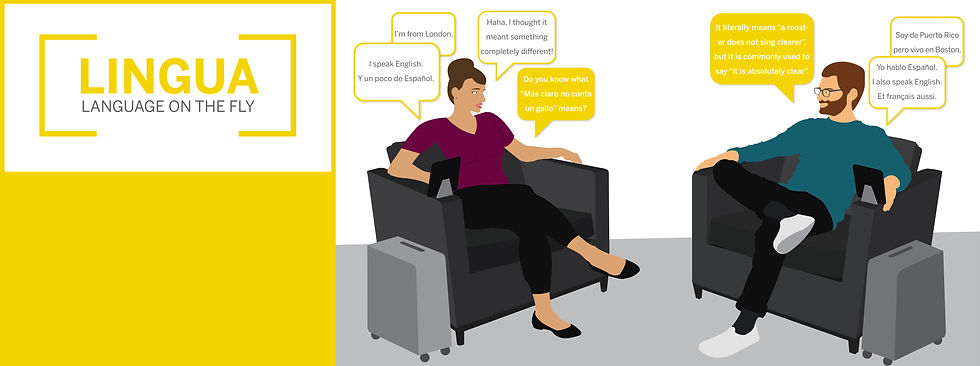
‘LINGUA: Language on the Fly’ strives to offer three interactive and immersive experiences: collaborative, individual, and collective. Each area highlights a different aspect of the LINGUA experience, so that travelers may embrace language learning and sharing at their own comfort.
a collaborative experience
This is a space in which users are intended to foster one on one interactions. It relies on the coexistence of a digital platform, made accessible through an iPad, and users willing to engage in conversation. It is designed so that users may input their language preferences and interests, as well as their travel information. Additionally, the digital platform is devised in such a way that it can recognize users’ proximities in order to suggest points of conversation that spark curiosity. The goal of this space is to facilitate ‘moments of intimacy’ between users during their conversations.








An Individual experience
Not everyone feels comfortable initiating conversation or interacting with strangers, even though they might be interested in sharing a language. For this reason, LINGUA offers the ‘Individual’ space, which enables users to explore language learning through existing language platforms such as Duolingo, Babbel, Memrise, BBC Languages, Busuu, and others. Although this area is intended for users to delve into a language of their choosing, users are also able to access the digital platform.
A collective experience
Some people might feel the need to be prompted in order to interact with other individuals. However, others prefer to guide themselves through their own interactions. The ‘Collective’ section of LINGUA: Language on the Fly is an area that provides no mediated digital interactions. Instead, it offers readily available books and games which users could interact with individually or with other travelers. Users are encouraged to use this space per their preference; however, the space is set up so that users can easily interact if they wish to.




Research and
design concept
books + poster
